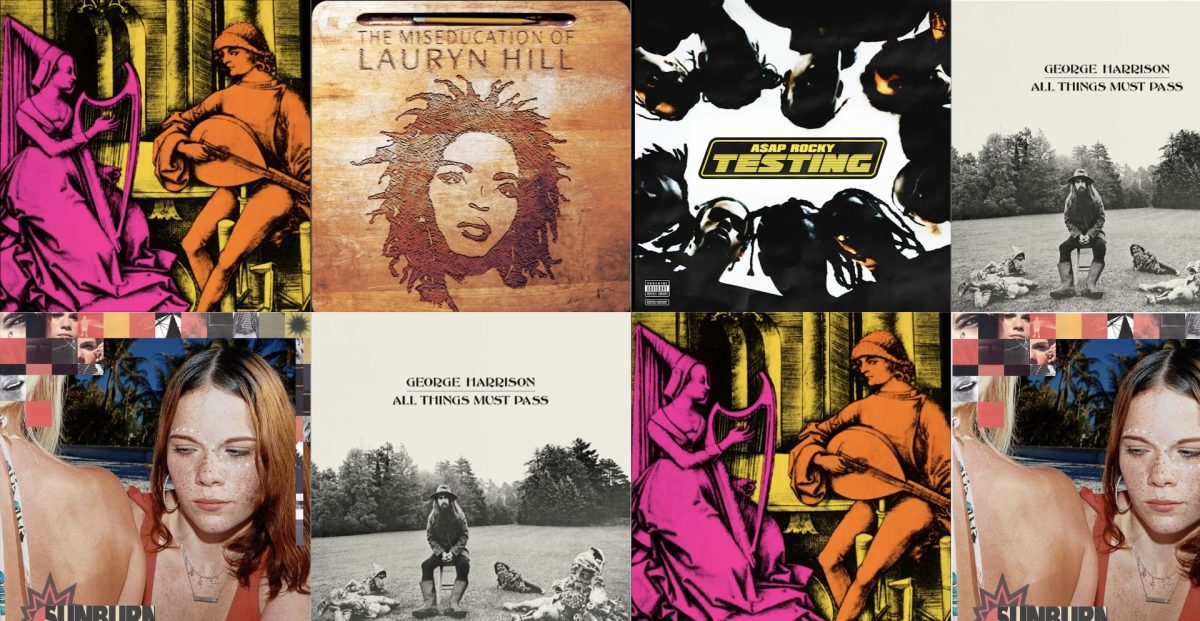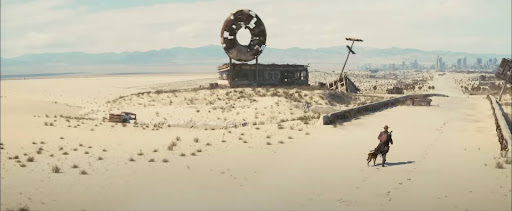
Dr. Amy Gansell shares with the Torch five pieces of media in the field of Mesopotamian art history.
“It’s not just about going to an art museum and being able to understand what you’re looking at or speak intelligently about the art. It’s literally about having art in your daily life and it is in our daily lives –– we just don’t always notice it. Once you see it, you start to appreciate it and it can really improve your experience in life,” Dr. Amy Gansell explained to the Torch in her office in St. John’s Hall.
At her desk, surrounded by prints and books on ancient Middle Eastern art, one would think that Dr. Gansell has always been dedicated to the subject of ancient Mesopotamia –– the first civilization known to man –– and the preservation and conservation of its art.
“I grew up since I was very little wanting to be an archaeologist –– maybe since I was four or five years old. So I understood that the things, the evidence of people that came before us was under the ground and I wanted to access that and I wanted to understand people,” she said.
Initially majoring in archeology, Dr. Gansell took a combination of courses in classics and anthropology that led her to a class filled with few students, “Assyrians in Art.” Guided by her desire to discover the world and its secrets, she was blown away by a culture and an era she had never been exposed to.
“I wanted to make discoveries and not just in archeology but discoveries about how people lived,” she explained.
Over the course of her impressive education and career, she has received both her M.A. and Ph.D. in Ancient Near Eastern Art from Harvard University, held positions at the Metropolitan Museum of Art, the Harvard Art Museums and the United States Department of State and gained substantial archaeological experience around the world, including the position of head registrar at the site of Tell Atchana in Turkey.
Here are some of her top media picks in the field of Mesopotamian art history that she feels should be required viewing for all:
Joan Aruz, et al., eds. Art of the First Cities: The Third Millennium B.C. from the Mediterranean to the Indus (The Metropolitan Museum of Art, 2003).
Joan Aruz, et al., eds. Beyond Babylon: Art, Trade, and Diplomacy in the Second Millennium B.C. (The Metropolitan Museum of Art, 2008).
Joan Aruz, et al. eds. Assyria to Iberia: at the Dawn of the Classical Age (The Metropolitan Museum of Art, 2014).
These three selections are all museum exhibition catalogues from a series of shows at the Metropolitan Museum of Art that focus on art in ancient Mesopotamia over the course of three millennia. Chosen by Dr. Gansell for their focus on the material world of ancient Mesopotamia and the interconnected networks of trade, culture and communication, the exhibits showcase the unique collaboration of scholars and museums from all around the world –– in both the contribution of artifacts and prose.
“I think objects –– and this probably goes back to my perspective as an anthropologist –– objects are made by people, they’re made for people,” Dr. Gansell explained.
“They’re handled by people, they’re discussed, they’re central to the lives of people and I think that’s a really great tool for us then are kind of empathic students of the ancient world to get into that perspective to understand what life was like and understand why it was like that.” For Dr. Gansell, in particular, these exhibits have granted her the ability to learn the interconnectedness of different areas of speciality –– illustrating “the connections that stretched hundreds of miles.”
“We live in a global society things are networked, things are shared back and forth. It’s not also just one dominate culture –– different cultures bring different things to the table. It’s kind of showing us how our world works today and how that world was in ancient times.”
The Northwest Palace at Nimrud, Virtual Reality Simulation (Learning Sites, Inc.)
http://www.learningsites.com/NWPalace/NWPalhome.php
Fourth on the recommendation list is a virtual reality site in use for educational purposes since the late 1990s. By utilizing archaeological research, the simulation allows participants to move through an ancient Assyrian palace, at its original scale, complete with art, architecture and ancient human inhabitants typical of the region and time. “It’s a vehicle for bringing up empathy through kind of what I consider anthropology participant observation ––- being immersed in the culture so that you can understand it from the inside instead of just looking at it or learning about it at an arm’s length or from the outside. So I think that’s where my interest comes from ––- this really anthropological perspective of study,” Dr. Gansell explained.
Virtual reality, which has increased in popularity despite its long standing development, allows users to emphasize with historical characters –– bringing the past into the present.
“… What we can do is use the archeological evidence, the textual evidence, the materials that we have, the art that we have, our very best to stimulate these worlds and to put yourself in first person avatars … we start to ask new questions –– questions that we don’t even know that we have when we’re reading about it in a book…”
Dr. Gansell is currently collaborating collaborating with Learning Sites, Inc. –– the company that owns the site –– to develop a queen-type character as there is currently no female characters on the site, unreflective the ancient reality.
Emergency Red List of Iraqi Cultural Objects at Risk (updated 2015)
https://icom.museum/wp-content/uploads/2018/05/RedListIraq_EN.pdf
The fifth recommendation is a pamphlet developed by the International Council of Museums with the support of the US Department of State, for the purpose of educating the public on “targets of illicit artifact trafficking and is intended to be used by ‘art and heritage professionals and law enforcement officials’ to identify and report any items of illegally traded Iraqi cultural property,” according to Dr. Gansell. By familiarizing students and the public with such a list, Dr. Gansell believes that others can recognize the active ongoing threats to Iraqi cultural heritage.
Dr. Gansell has a special history with the State Department, as the former associate coordinator for Iraqi and Afghan Cultural Heritage. After earning her Ph.D. from Harvard University in June 2008, she began her work at the State Department in September of that same year. The project, intended to culturally stabilize the region after the Iraq War, helped to physically restore the Iraq Museum, build a program of professional training for museum workers for the Afghan National Museum and the National Museum of Iraq and sought to preserve the historical site of Babylon.
Overall, Dr. Gansell wishes to foster a greater understanding of the region and believes the next step is “to undo … the stereotypes that are presented in popular media about the people being less civilized … to be able to understand the mix of cultures that are there can help you see it in a longer perspective and to understand it more broadly in the context of the world,” Dr. Gansell said.
“There’s tons of lost cities that haven’t been found … when people associate it right away with bombs … well that’s kinda closing down the conversation, leaving us with memory of violence and that’s not what I want to inspire people with. We can inspire them with the future of wonderful things –– not treasures like ‘Oh this is a great treasure, I want to take it back and put it in a museum’ –– but wow now I understand what life was like 4,500 years ago –– that’s really cool.”
















